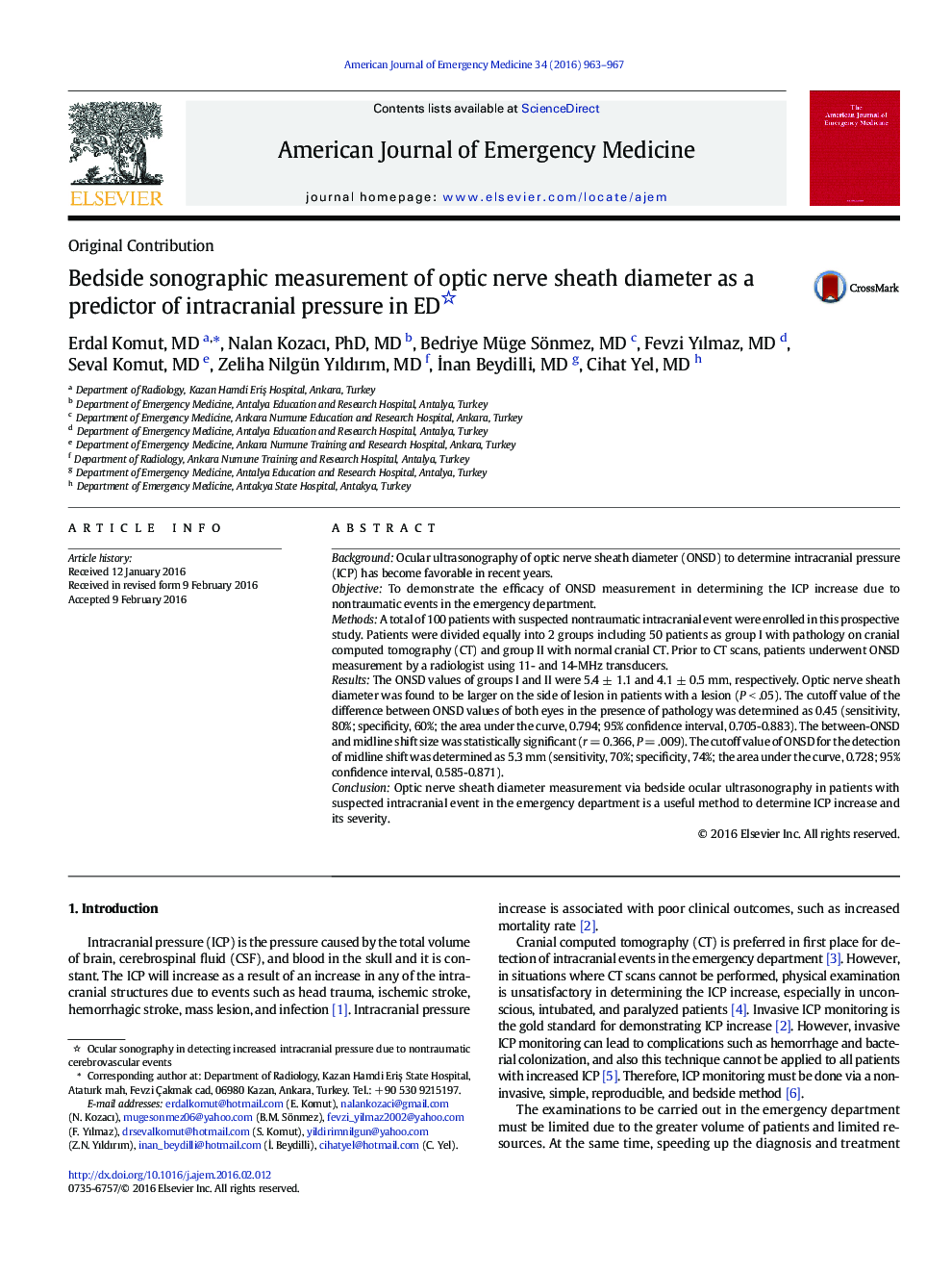| Article ID | Journal | Published Year | Pages | File Type |
|---|---|---|---|---|
| 3223107 | The American Journal of Emergency Medicine | 2016 | 5 Pages |
BackgroundOcular ultrasonography of optic nerve sheath diameter (ONSD) to determine intracranial pressure (ICP) has become favorable in recent years.ObjectiveTo demonstrate the efficacy of ONSD measurement in determining the ICP increase due to nontraumatic events in the emergency department.MethodsA total of 100 patients with suspected nontraumatic intracranial event were enrolled in this prospective study. Patients were divided equally into 2 groups including 50 patients as group I with pathology on cranial computed tomography (CT) and group II with normal cranial CT. Prior to CT scans, patients underwent ONSD measurement by a radiologist using 11- and 14-MHz transducers.ResultsThe ONSD values of groups I and II were 5.4 ± 1.1 and 4.1 ± 0.5 mm, respectively. Optic nerve sheath diameter was found to be larger on the side of lesion in patients with a lesion (P < .05). The cutoff value of the difference between ONSD values of both eyes in the presence of pathology was determined as 0.45 (sensitivity, 80%; specificity, 60%; the area under the curve, 0.794; 95% confidence interval, 0.705-0.883). The between-ONSD and midline shift size was statistically significant (r = 0.366, P = .009). The cutoff value of ONSD for the detection of midline shift was determined as 5.3 mm (sensitivity, 70%; specificity, 74%; the area under the curve, 0.728; 95% confidence interval, 0.585-0.871).ConclusionOptic nerve sheath diameter measurement via bedside ocular ultrasonography in patients with suspected intracranial event in the emergency department is a useful method to determine ICP increase and its severity.
